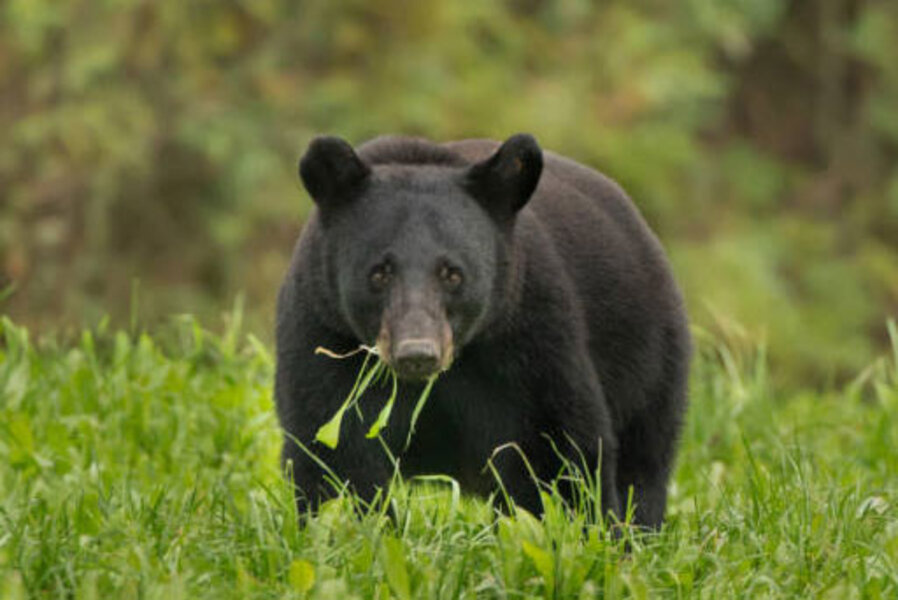Good news for teddy: Louisiana black bear is no longer threatened
After decades of recovery, the Louisiana black bear – the furry beast that inspired the creation of teddy bears – is now officially off the lists for threatened and endangered species under the Endangered Species Act.
The US Department of Interior Secretary Sally Jewell attributed the good news to partnerships with private landowners and their work to preserve forestland vital to the survival of the bears during her announcement at the Tensas River National Wildlife Refuge in northeast Louisiana, in the heart of black bear territory. She was there to “to celebrate a successful conservation partnership to protect and recover the Louisiana black bear from the brink of extinction," the department said.
Landowners as well as state and federal agencies, nonprofits, and universities all played a part in the bears’ population recovery, according to US Fish and Wildlife Services. Aggressive restoration programs and new regulations helped mitigate habitat loss enough to enable the iconic bear's population to rebound.
Similar efforts, on the part of both regulatory bodies and individuals, have helped restore habitats for numerous birds, mammals, and other creatures that once faced grave risk.
“There is a rewilding of America going on, which is extraordinarily heartening,” says Andrew Wetzler, the director of the Land and Wildlife Program at the Natural Resources Defense Council, told the Monitor last May, when FWS began the process of de-listing the bear.
The Monitor’s Patrik Jonsson reported at the time:
A potent combination of collaborative wildlife management techniques, cultural shifts in how Americans view large birds and mammals, the tenacity of the species themselves, and a cleaner overall environment have resulted in a record number of species being taken off the endangered species list in the Obama era, even as lawmakers start coming to terms with what it means to manage a country where raw, fanged wilderness now sniffs and grunts at the city limit.”
There are now between 500 and 750 Louisiana black bears in the United States, FWS says on its website – twice the population size two decades ago.
But estimates vary. Former Gov. Bobby Jindal (R) said the total was about 1,000 last May. A DNA census report released in 2014 projected the number to be between 350 and 600 in the region north of Interstate 10 in Louisiana. Those to the South have yet to be counted.
Some conservation experts say it may be too early to celebrate, and that the black bears still need federal protection.
The Center for Biological Diversity, for instance, says it’s skeptical that the bear is entirely ready for “delisting.” A spokesman said the group will be looking into the specific qualifications.
The local Sierra Club chairman Harold Schoeffler also casts doubt on whether the Louisiana Black Bear should be off the list. He said he's ready to sue if the bears are taken off. Mr. Schoeffler was the one who went to court in 1987 and attained protection for the bears under the Endangered Species Act.
Back then, he said, the population was 300 to 350. At one point, their numbers were down to 100.
"I think the important point is that we've done very little to re-establish the bear in places where they traditionally resided,” he added, such as forests in western Mississippi and the Kisatchie National Forest in Louisiana.
This report contains material from the Associated Press.






